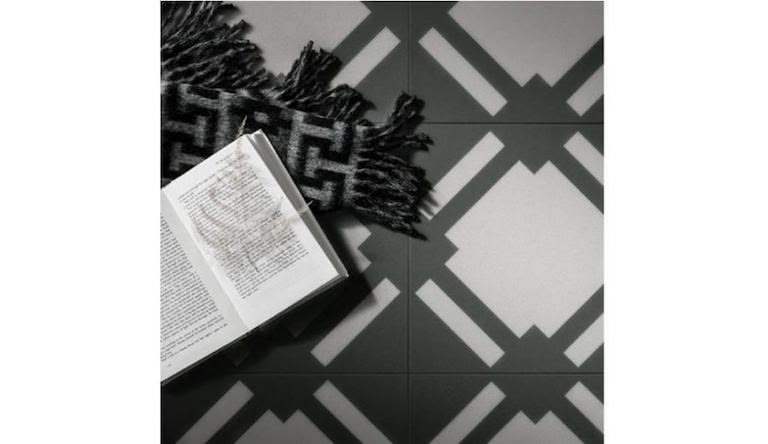
When choosing kitchen flooring, it’s likely that you’ll find a plethora of colours, styles and materials available, so as with any big kitchen choice it’s a good idea to create a mood board first to get a grip on your preferred looks and materials. Browsing Pinterest and Instagram is a great source of inspiration for kitchen flooring ideas, from on-trend patterned tile choices to wood and laminate finishes.
PRACTICAL CHOICES
Your kitchen flooring will get an enormous amount of use and will be on show constantly so in addition to the actual look and colour, there are three other things that are key when considering what you will buy: cost, durability and maintenance. The amount of traffic you have in the kitchen and whether it’s an open-plan space or a more contained area will also dictate your choices and might lead you to choose more than one material, depending on the area.
As well as the material, check how non-slip they are, particularly for areas near the sink where spillages might occur. Porcelain and ceramic tiles particularly will have details on the back of non-slip finishes.
ON TREND
Encaustic and patterned tiles are making a bit of a comeback at the moment, with styles from companies such as Bert & May proving very popular if you scan Pintrest or Instagram for inspiration. Natural wood is still popular and works well in more traditional designs and is a little more forgiving than stone when it comes to breakages. Oak is still as fashionable as it ages well, but in the kitchen choosing engineered wood will probably be a better choice as it’s less susceptible to warping in response to changes in temperature and moisture.
FLOORING MATERIALS
Years ago, choices might have been limited to terracotta tiles, wood or vinyl but options have broadened over the years and now include a huge variety of materials, from engineered or laminate wood to poured concrete and composite stone.
VINYL
Usually thought of as the budget choice, vinyl is generally slightly cushioned, depending on the thickness. It’s also easy to keep clean, which is great if you have children prone to dropping things. It’s water resistant and durable as long as it’s laid on a good, even base. Patterns and manufacturing methods have improved in recent years and companies such as Harvey Maria are at the forefront of innovative patterns from designers such as Neisha Crosland.
LAMINATE
Made from a photographic imaged laid on top of compressed fibreboard means laminate can replicate not just wood but natural stone or tiles as well, making it a good choice if you can’t afford the real thing. Remember, though, you do get what you pay for so cheaper options will not be hardwearing or as realistic as the more expensive choices. Quick-Step’s range covers many different styles and colours and varies from soft grey oak to dark slate and polished concrete.
SOLID AND ENGINEERED WOOD
Solid wood is very hard wearing and can be sanded to get out spots and stains or to achieve another look and often original floorboards can look perfect in a more traditional design. Engineered wood has the added advantage of being able to withstand water and heat more consistently. The layered plywood construction usually makes it a much more stable meaning it’s less likely to move when exposed to changes in heat and humidity.

NATURAL OR COMPOSITE STONE
Natural stone floors, such as terracotta, limestone and marble will look fabulous on a kitchen floor but can be pricey and require treating and regular maintenance to ensure they look at the best for longer. Another alternative is composite, such as Dekton, which can be used both inside and out – a great solution if you’re looking for a surface that can be taken from indoors to outside to create continuity when fitting bi-fold doors for instance. Remember, too, that anything breakable is very likely to smash if dropped on a hard stone floor.

PORCELAIN OR CERAMIC TILES
A classic choice for hundreds of years there is so much on offer these days you can be as bold or as subtle as you like. Large format, plainer tiles will help to create a feeling of space and are a good choice in a big, multi-function room, while smaller patterned tiles can create a feature. Beware of using too much pattern, though especially if you have a patterned tiled splashback as it could clash or become overwhelming. Tiles made with porcelain or ceramic can replicate pretty much any natural stone surface with the added benefit of generally being less pricey and easier to clean and maintain.


CONCRETE
A relative newcomer to the kitchen flooring market, concrete is a considered purchase as it requires specialist laying and finishing. Once down, though a polished concrete floor can look amazing, particularly in a contemporary, industrial style kitchen diner. If you don’t want the faff of pouring and polishing, then a good alternative is to opt for concrete or concrete-look large format tiles instead. Concrete, once treated and polished is easy to keep clean, too.
Ready to start planning your kitchen design? Visit your local Harvey Jones showroom or call 0800 389 6938.
Looking for more inspiration? Visit our Pinterest and Instagram pages to help decided on flooring tiles and more.






